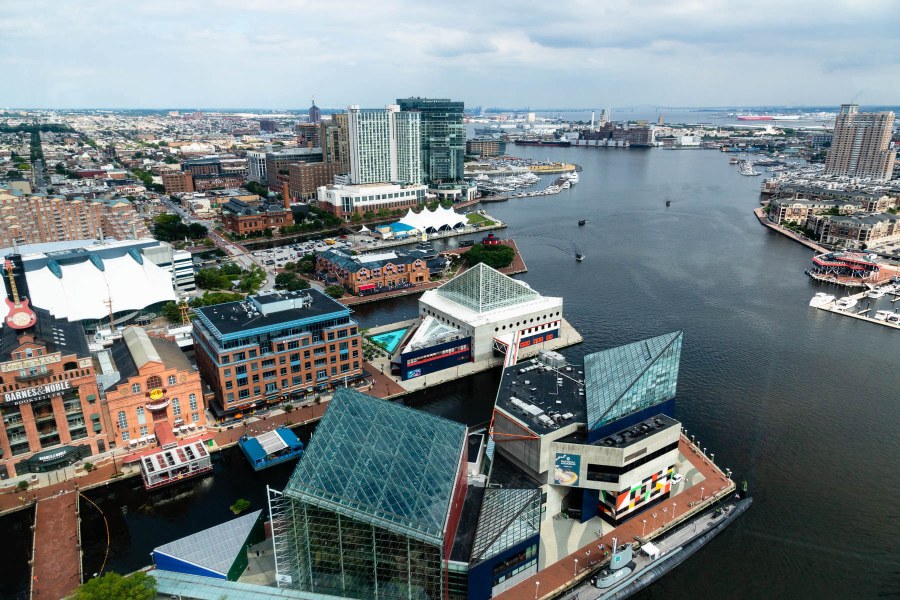Baltimore’s Inner Harbor shows a decade’s worth of water quality improvements
The Waterfront Partnership of Baltimore releases plan to make the Inner Harbor swimmable by 2030

Over the past ten years, the Baltimore Inner Harbor has gotten much cleaner, but not quite clean enough to be the swimmable hotspot that the city is hoping for.
This continues to be a goal, though, as outlined in the Waterfront Partnership of Baltimore’s Harbor Heartbeat—an annual update on water quality in the city. This year, the partnership that brought you Mr. Trash Wheel documents the past ten years of water quality improvements with data collected, prepared, analyzed and distributed by Blue Water Baltimore. The report reveals how far Baltimore waterways have come since 2009 and outlines an exciting plan to make the harbor swimmable by 2030.
According to the report, on dry weather days (defined as 48 hours after heavy rainfall), many of sites that Blue Water Baltimore monitors on a regular basis already meet the Maryland Department of the Environment’s guidelines for recreation. Compared to 2009, all of the sampling sites in the harbor and its tributaries have either reduced bacteria scores or remained the same, while none have worsened. The partnership attributes this positive trend to the repairing of sewer leaks, construction of wastewater treatment plants and various other pollution reductions efforts taken by federal, state and local governments and non-profit organizations over the years.
With that said, challenges to the health of Baltimore waterways persist. Water quality scores were actually worse in 2019 than they were in 2018, and heavy rainfall leaves the harbor unsafe to swim in for 48 hours due to the pollution that comes from stormwater runoff. The report also shows low “ecosystem indicators,” such as increased amounts of excess nutrients in streams and the harbor, as well as high conductivity scores that indicate an abundance of salts and chemicals in the streams that could harm fish and other organisms. A lack of improvements to Baltimore’s stormwater management also continues to hurt the harbor and its connected streams.
Despite challenges, environmental leaders are steadfast in their goal of providing healthy water for tourists and Baltimore residents to enjoy. Laid out in the report is the Waterfront Partnership’s plan to make the harbor swimmable by 2030, which includes the potential for projects such as an enclosed, movable structure that people can swim in, a network of floating wetlands to improve water quality and attract wildlife, a flagging system to indicate swimmable spots and swimming events on safe days to change public perception.
Included in the report was a message from Mike Hankin, chairman emeritus of the Waterfront Partnership, in which he thanked various environmental groups, the city of Baltimore and residents whose taxes go to restoration efforts.
“Let’s make a pledge that, as this work continues, we will return Baltimore’s Harbor
to the citizens who footed the bill,” said Hanking. “Let’s set a new goal for a truly accessible and recreational waterfront with water trails that connect paddlers to our marine ecosystem and maritime history, a notification system informing boaters about water quality in real-time, and a dedicated swim site where people can safely take a plunge into the Harbor.”

Comments
There are no comments.
Thank you!
Your comment has been received. Before it can be published, the comment will be reviewed by our team to ensure it adheres with our rules of engagement.
Back to recent stories